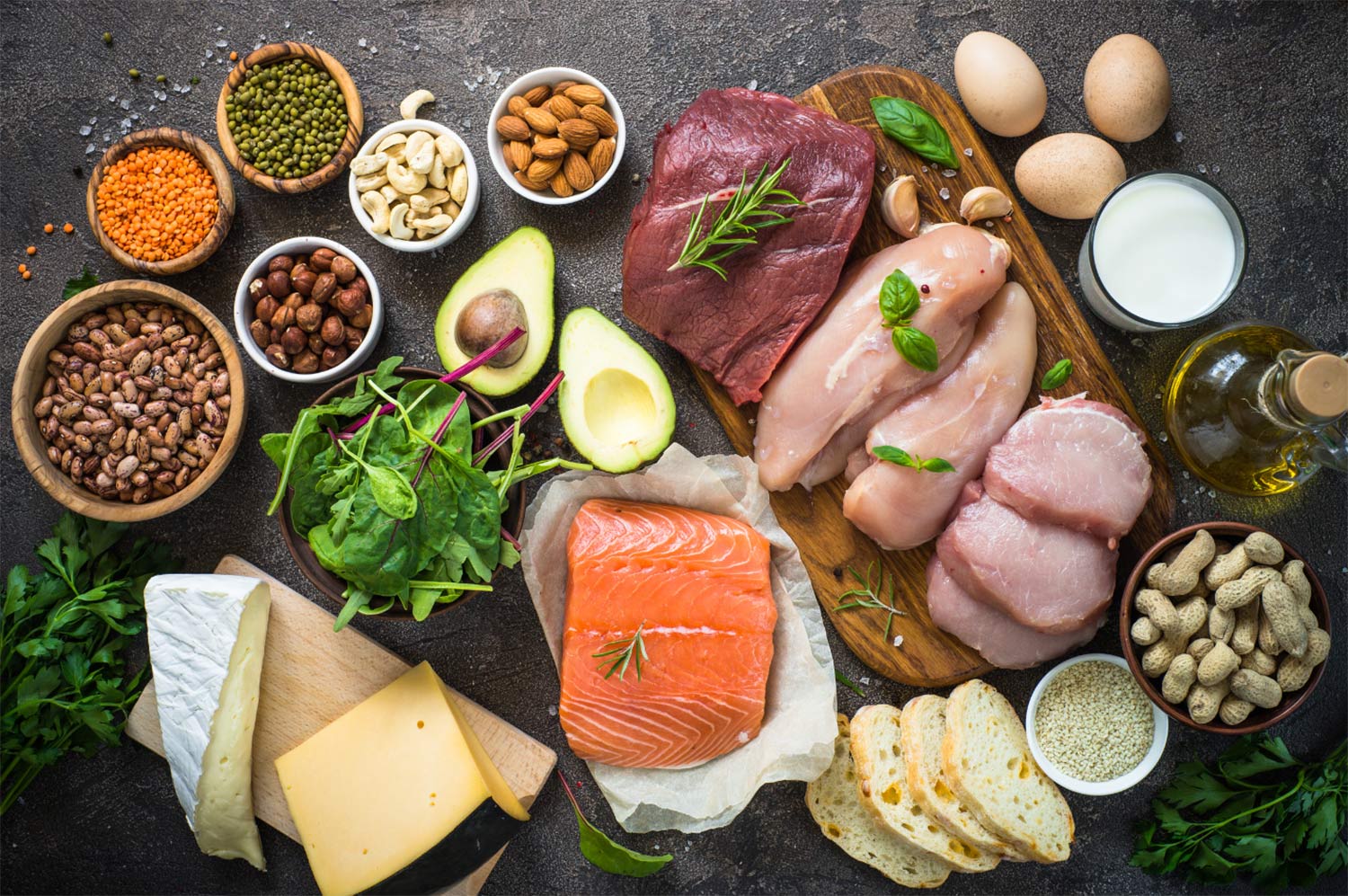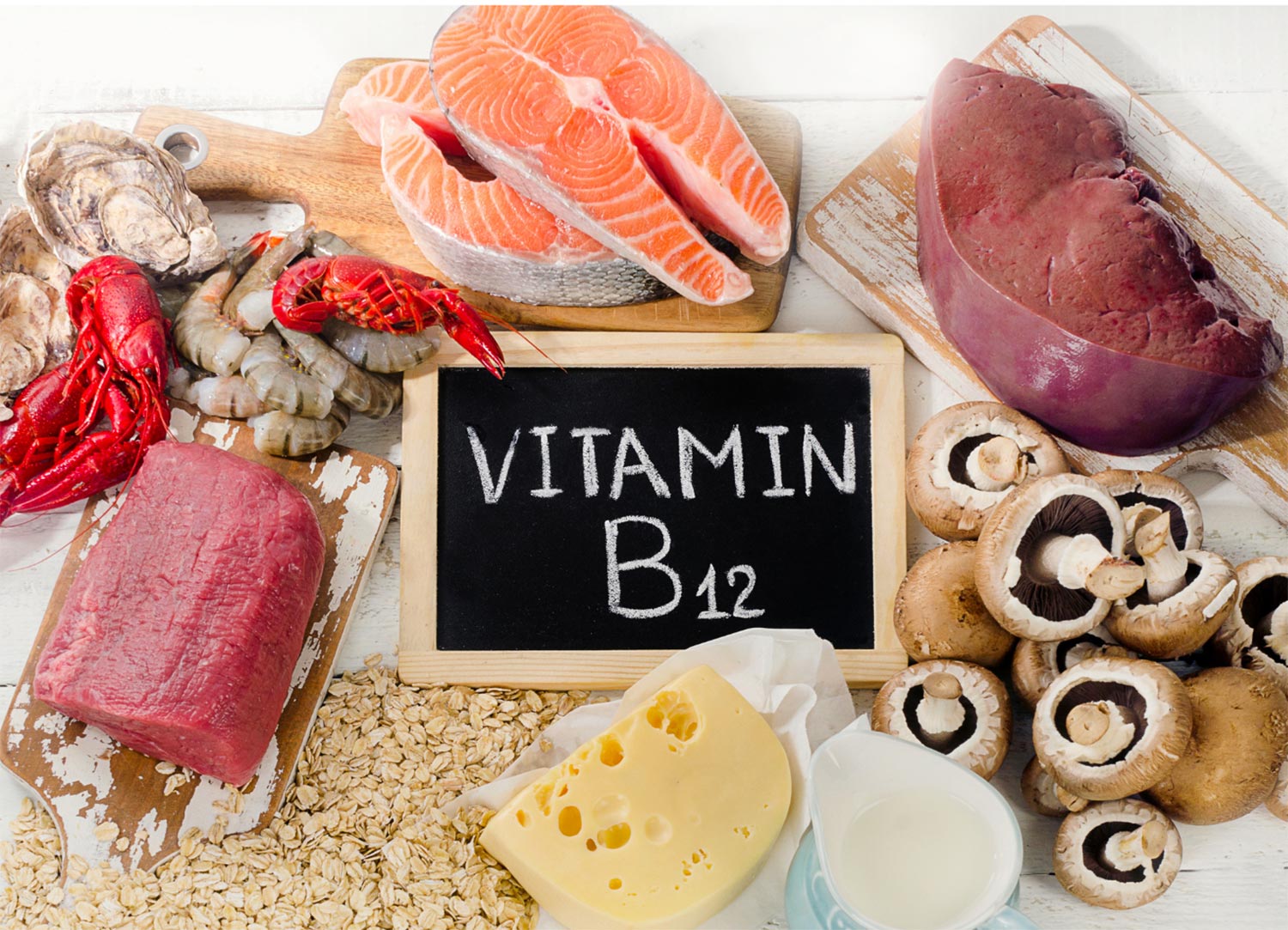Assisted Living in Modesto: Prioritizing Nutrition for Residents

The Importance of Good Nutrition as We Age
One of the most important topics in senior care in Modesto is nutrition for seniors residents. As we age, our bodies undergo significant changes that affect how we process and absorb nutrients. What may have worked well for us in our younger years no longer provides the same benefits or sustenance. According to a report by the National Council on Aging, the metabolism in older adults tends to slow down, leading to a natural decrease in muscle mass and a decline in bone density, which makes proper nutrition even more crucial. Additionally, a study from the American Geriatrics Society highlights that many seniors experience changes in their sense of taste and smell, which can significantly impact their appetite and food choices. For seniors in assisted living in Modesto, focusing on a nutrient-rich diet tailored to these evolving needs is essential for maintaining overall health and quality of life.

The Importance of Nutrition for Seniors in Modesto
As we grow older, our bodies go through a variety of physical and metabolic changes that can have a significant impact on overall health. According to the World Health Organization, by the age of 65, up to 30% of muscle mass may be lost due to aging, which makes maintaining proper nutrition even more essential. Experts at the National Institute on Aging also emphasize that ‘the body’s ability to absorb vital nutrients declines as we age,’ which further increases the need for a nutrient-dense diet.
Moreover, studies show that nearly 50% of older adults do not meet the daily recommended intake of key nutrients like calcium and vitamin D, leading to an increased risk of bone fractures and osteoporosis. ‘Aging adults need to pay special attention to their dietary intake,’ notes Dr. Rebecca Michaels, a renowned gerontologist, ‘because their bodies require more specific nutrients to support bone health, muscle maintenance, and immune function.’ For example, research shows that diets rich in omega-3 fatty acids can reduce inflammation by 25%, helping to combat age-related chronic conditions.
Incorporating these nutrient-rich foods into daily meals becomes a critical strategy for seniors, especially in assisted living environments, where up to 65% of residents report improvements in energy and well-being after dietary adjustments.
Metabolism Slows Down
One of the most noticeable changes in older adults is a reduction in metabolic rate. As we age, our bodies require fewer calories to function efficiently. The decrease in muscle mass (a key driver of metabolism) combined with reduced physical activity means that older adults burn fewer calories at rest. However, while the calorie needs of elderly individuals may decline, their need for essential nutrients like vitamins, minerals, and protein remains the same or even increases.
This slower metabolism makes it easier to gain weight if calorie consumption isn’t properly managed, but more importantly, it makes it crucial to focus on nutrient-dense foods. Empty calories from processed foods, sugary snacks, or fast food can lead to malnutrition, even if calorie needs are met. That’s why a diet rich in whole grains, lean proteins, fruits, vegetables, and healthy fats is critical for maintaining health in old age.

Muscle Mass Decreases
Sarcopenia, the natural loss of muscle mass with aging, is a common concern for elderly individuals. This process typically begins around the age of 30, but it accelerates after age 60. Muscle mass can decrease by as much as 3-5% per decade, which can lead to weakness, decreased mobility, and a higher risk of falls and fractures. Because muscles play a key role in maintaining balance, mobility, and overall physical function, it’s vital to support muscle health through proper nutrition.
Adequate protein intake becomes even more essential for the elderly, as it helps slow the rate of muscle loss and supports muscle repair and growth. Pairing a protein-rich diet with regular physical activity, especially strength-building exercises, can significantly help in preserving muscle mass and improving quality of life.
Bone Density Declines
Bone density naturally decreases as we age, a condition known as osteopenia or, in more severe cases, osteoporosis. This loss of bone mass makes bones more fragile and increases the risk of fractures, which can be particularly dangerous for elderly individuals. The reduction in estrogen (in women) and testosterone (in men) during the aging process also accelerates bone loss, making proper bone health management critical.
Calcium and vitamin D are two nutrients vital for maintaining strong bones. Calcium supports bone structure, while vitamin D helps the body absorb calcium effectively. As older adults often get less sun exposure (which is the primary way the body produces vitamin D), deficiencies can occur, making it necessary to obtain sufficient vitamin D through diet or supplements.
Key Nutrients for Elderly Health
One of the most important topics in elderly care is nutrition for seniors residents. As we age, our body’s nutritional needs evolve, and ensuring an adequate intake of specific nutrients becomes crucial for maintaining health, vitality, and independence. Below are some of the most important nutrients for elderly individuals and why they play a vital role in healthy aging and also in nutrition for seniors
Protein: Maintaining Muscle Mass and Strength

Protein is essential for building and maintaining muscle mass, which naturally decreases with age. Adequate protein intake can help prevent sarcopenia (age-related muscle loss), which is critical for maintaining strength, mobility, and balance. Maintaining muscle mass helps elderly individuals stay active, reduces the risk of falls, and supports recovery from illness or injury.
For older adults, consuming protein throughout the day (at each meal) can be more effective than consuming it all at once. Including a variety of protein sources ensures a full range of essential amino acids, which are building blocks for muscle.
Examples of protein-rich foods:
● Lean meats like chicken, turkey, and lean beef.
● Fish such as salmon, tuna, or cod.
● Eggs, which are versatile and nutrient-dense.
● Legumes like beans, lentils, and chickpeas.
● Dairy products such as milk, cheese, and yogurt.
● Plant-based options like tofu, tempeh, and nuts.
Calcium and Vitamin D: Supporting Bone Health

Bone health is a critical concern for older adults, as the risk of osteoporosis and fractures increases with age. Calcium plays a key role in building and maintaining strong bones, but its effectiveness depends heavily on vitamin D, which enhances calcium absorption in the body.
As we age, our ability to absorb calcium diminishes, and vitamin D production from sun exposure decreases, especially for those who spend less time outdoors. Without sufficient calcium and vitamin D, bones become fragile, increasing the risk of fractures and other bone-related injuries.
Examples of calcium-rich foods:
● Dairy products like milk, yogurt, and cheese.
● Fortified plant-based milks such as almond, soy, or oat milk.
● Leafy green vegetables like kale, spinach, and collard greens.
● Fortified cereals and juices.
Sources of vitamin D:
● Sunlight: Spending time outdoors in natural sunlight is one of the best ways to get vitamin D.
● Fatty fish like salmon, mackerel, and sardines.
● Fortified foods, including milk, orange juice, and cereals.
Fiber: Supporting Digestive Health

Aging can often slow down the digestive system, leading to constipation, bloating, and discomfort. A high-fiber diet is essential for maintaining a healthy digestive system, as fiber helps move waste through the digestive tract, supports regular bowel movements, and prevents constipation.
Additionally, fiber can help lower cholesterol levels, regulate blood sugar, and promote a healthy weight—important factors in preventing heart disease and managing diabetes, two common conditions in older adults.
Examples of fiber-rich foods:
● Whole grains like oats, brown rice, and whole wheat bread.
● Fruits such as apples, berries, pears, and bananas.
● Vegetables like broccoli, carrots, and leafy greens.
● Legumes including beans, lentils, and chickpeas.
● Seeds such as flaxseeds and chia seeds.
Vitamin B12: Essential for Brain and Nerve Health

Vitamin B12 is crucial for maintaining brain and nerve function, as well as the production of red blood cells. However, as we age, our bodies become less efficient at absorbing B12 from food, especially for those with digestive issues or those taking certain medications that reduce stomach acid.
A deficiency in B12 can lead to cognitive decline, memory loss, and fatigue. Ensuring adequate B12 intake can help protect brain health and prevent anemia, a common issue in the elderly.
Examples of B12-rich foods:
● Meat such as chicken, beef, and pork.
● Fish like salmon, tuna, and trout.
● Eggs and dairy products, which are also good sources.
● Fortified cereals, particularly useful for those on a plant-based diet.
● B12 supplements, which may be necessary for individuals who have difficulty absorbing
the vitamin from food.
Omega-3 Fatty Acids: Promoting Heart Health and Reducing Inflammation

Omega-3 fatty acids are known for their anti-inflammatory properties, which are essential for reducing the risk of heart disease, arthritis, and other inflammatory conditions common in older adults. Omega-3s also support cognitive function, making them beneficial for brain health as well.
Eating foods rich in omega-3s can help improve heart health, lower triglycerides, reduce blood pressure, and support healthy cholesterol levels.
Examples of omega-3-rich foods:
● Fatty fish like salmon, mackerel, and sardines.
● Walnuts, which are a plant-based source of omega-3s.
● Flaxseeds and chia seeds, both rich in alpha-linolenic acid (ALA), a type of omega-3.
● Fortified foods like eggs and dairy products.
Water: The Importance of Staying Hydrated

Hydration is a critical yet often overlooked component of elderly nutrition. As people age, their sense of thirst diminishes, meaning older adults may not drink enough water to stay hydrated. Dehydration can lead to several health issues, including confusion, urinary tract infections, constipation, and even kidney problems.
Encouraging elderly individuals to drink water regularly, even if they don’t feel thirsty, is essential for maintaining overall health. In addition to water, hydrating foods like fruits and soups can also contribute to daily water intake.
Tips for staying hydrated:
● Drink water throughout the day, not just when feeling thirsty.
● Incorporate hydrating foods like watermelon, cucumbers, and oranges.
● Try herbal teas, broths, or flavored water for variety.
Common Nutritional Challenges for the Elderly

Decreased Appetite
Many older adults experience a natural decline in appetite, which can make it difficult to consume enough calories and nutrients. Several factors contribute to a reduced appetite, including:
● Reduced Sense of Taste and Smell: As we age, our senses of taste and smell tend to diminish, making food less enjoyable and appealing.
● Dental Issues: Problems such as missing teeth, ill-fitting dentures, or gum disease can make eating uncomfortable or even painful.
● Medications: Certain medications can suppress appetite or cause side effects like nausea, which discourage eating.
● Less Physical Activity: A decrease in physical activity can lead to lower energy requirements, making hunger cues less frequent.
Tips to Address Decreased Appetite:
● Small, Frequent Meals: Encourage eating smaller, nutrient-dense meals throughout the day instead of three large ones.
● Flavor Enhancers: Use herbs, spices, and citrus to boost flavor without relying on salt or sugar.
● Nutrient-Dense Foods: Focus on foods that pack a nutritional punch in small portions, such as avocados, eggs, nut butters, and smoothies.
● Social Meals: Eating with family or friends can make mealtime more enjoyable and encourage better eating habits.
Difficulty Chewing or Swallowing
Dental problems, dentures, or conditions like dysphagia (difficulty swallowing) can make it hard for elderly individuals to eat certain foods. This can lead to a restricted diet that may lack essential nutrients.
Tips for Soft, Nutrient-Dense Foods:
● Soft Proteins: Choose easily chewable protein sources like scrambled eggs, yogurt, tofu, and cooked fish.
● Cooked Vegetables: Steaming or boiling vegetables until soft makes them easier to eat, while retaining most of their nutrients.
● Smoothies and Purees: Blending fruits, vegetables, and protein powders into smoothies or pureeing soups can offer a nutrient-packed alternative that’s easier to swallow.
● Mashed Foods: Mashed sweet potatoes, avocados, and bananas provide easy-to-eat options that are rich in nutrients.
● Use Thickeners: For those with swallowing difficulties, thickening agents can be added to liquids and soups to make them easier to manage.
Medication Interactions

Medications are often essential for managing chronic conditions in older adults, but they can also interfere with nutrient absorption or appetite. Certain medications may:
● Reduce Nutrient Absorption: For example, some heart medications can interfere with the body’s ability to absorb calcium or vitamin D, which are essential for bone health.
● Suppress Appetite: Medications for pain, high blood pressure, or mood disorders may cause nausea, dry mouth, or other side effects that reduce the desire to eat.
● Alter Taste: Some medications can affect taste perception, making food seem bland, metallic, or unappealing.
Solutions for Managing Medication Interactions:
● Consult with a Doctor or Pharmacist: If medications are affecting appetite or nutrient absorption, consult a healthcare professional to discuss alternatives or adjustments.
● Supplements: In cases where medications interfere with nutrient absorption, supplements for calcium, vitamin D, or other affected nutrients may be recommended.
● Timing of Meals and Medication: Adjusting the timing of meals around medication schedules can help reduce side effects like nausea or poor appetite.
Social Factors

Living alone can significantly impact an elderly person’s motivation to prepare and eat balanced meals. Without the social aspect of dining, eating can feel like a chore, leading to skipped meals or reliance on convenient, processed foods.
Addressing Social Isolation and Mealtime Motivation:
● Social Meal Programs: Encourage participation in community meal programs, senior centers, or church gatherings where meals are shared.
● Cooking Clubs or Meal Delivery Services: Cooking clubs or potlucks can provide social engagement while ensuring meals are nutritious. Alternatively, meal delivery services designed for seniors can offer healthy, ready-to-eat options.
● Shared Meals with Family and Friends: Regularly scheduled meals with loved ones can increase both appetite and the enjoyment of food.
● Easy-to-Prepare Meals: Providing access to healthy, pre-prepared meals or teaching simple recipes can reduce the burden of cooking for one.
Practical Dietary Tips for the Elderly
Maintaining a balanced diet is crucial for the health and well-being of older adults, but various factors can make it challenging. From reduced appetite and difficulty preparing meals to needing additional nutrients, elderly individuals often need practical solutions to meet their nutritional needs. This section offers actionable tips to make healthy eating easier and more accessible for older adults.
Eat Smaller, More Frequent Meals
As many older adults struggle with a reduced appetite, eating smaller, more frequent meals throughout the day can be a more practical approach than traditional large meals. This method ensures that essential nutrients are consumed without overwhelming the digestive system or making meals feel like a chore. Small meals are also easier to digest and can help maintain stable blood sugar levels, preventing fatigue and irritability.
Tips for Incorporating Small Meals:
● Plan for 5-6 small meals instead of three large ones. These can include mini-portions of protein, healthy fats, and fiber-rich foods.
● Combine nutrient-dense options like a small serving of scrambled eggs with toast for breakfast, a piece of fruit with a handful of nuts for a snack, or a small portion of grilled chicken with steamed veggies for dinner.
● Listen to hunger cues: Encourage eating when feeling even slightly hungry, rather than waiting for a larger appetite to develop.
Fortified Foods and Supplements

As we age, the body’s ability to absorb certain nutrients—such as calcium, vitamin D, and B12—decreases, putting older adults at risk of deficiency. Fortified foods and supplements can help fill in these nutritional gaps and ensure elderly individuals get the nutrients they need to maintain bone health, brain function, and overall vitality.
Tips for Using Fortified Foods and Supplements:
● Choose fortified cereals, breads, and plant-based milks that are enriched with vitamins and minerals, especially calcium, vitamin D, and B12.
● Consult a healthcare provider or dietitian to determine whether supplements are needed. Common supplements for older adults include vitamin D, calcium, B12, and omega-3 fatty acids.
● Take supplements with food to enhance absorption, particularly for fat-soluble vitamins like vitamin D.
For individuals on a plant-based diet or those with restricted diets, fortified foods and supplements can make a big difference in meeting their daily nutritional requirements.
Healthy Snacking

Snacking can be a great way to ensure that older adults consume enough calories and nutrients throughout the day, especially if they have smaller appetites. Healthy snacks can also help regulate blood sugar levels and provide sustained energy between meals.
Healthy Snack Ideas:
● Nuts and Seeds: Almonds, walnuts, or sunflower seeds are rich in healthy fats, protein, and fiber, making them a great snack for maintaining energy.
● Yogurt: Greek yogurt is an excellent source of protein and calcium. Look for unsweetened varieties and add fruit or honey for natural sweetness.
● Fresh Fruit: Apples, berries, bananas, and oranges are packed with vitamins, minerals, and fiber. Pairing fruit with a protein source, like cheese or peanut butter, can create a balanced snack.
● Vegetable Sticks with Hummus: Carrot, cucumber, or celery sticks dipped in hummus provide fiber, vitamins, and plant-based protein.
● Whole-Grain Crackers and Cheese: This combination offers a balanced snack with carbohydrates, protein, and healthy fats to maintain energy levels.
Encouraging nutrient-dense snacking can help ensure that older adults are meeting their daily nutritional needs, even if they eat smaller meals.
